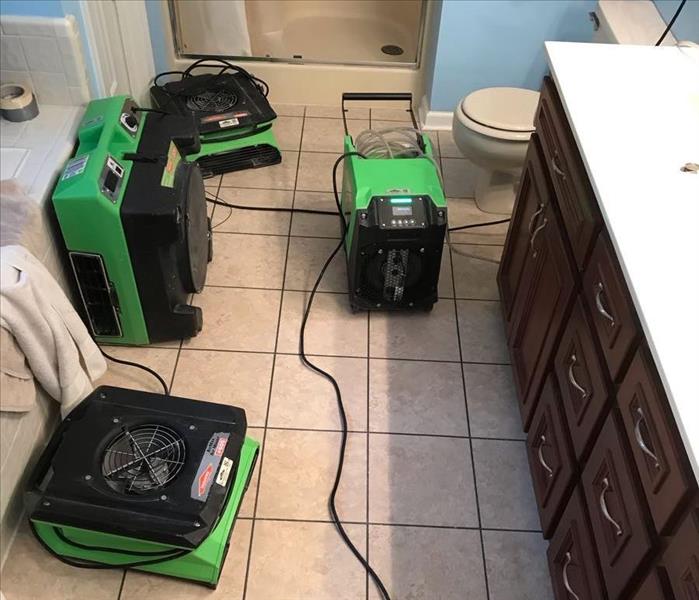Navigating Water Damage During Home Renovations
2/21/2024 (Permalink)
 Quick and effective responses to water-related issues not only protect your home but also ensure that your transformative renovations proceed smoothly
Quick and effective responses to water-related issues not only protect your home but also ensure that your transformative renovations proceed smoothly
Renovating your home is an exciting endeavor that can breathe new life into your living space. However, unexpected water damage during renovations can quickly turn excitement into stress. Whether you're updating the kitchen or expanding a room, it's crucial to be prepared for potential water-related challenges. In this blog, we'll explore proactive measures to handle water damage during renovations, ensuring a smoother and more resilient transformation.
Pre-Renovation Inspection
Before embarking on renovations, conduct a thorough inspection of your home, paying close attention to areas susceptible to water damage. Check for leaks, identify weak points, and assess the overall condition of plumbing and roofing systems.
During renovations, your home can be exposed to various elements, including the possibility of unexpected rain or water from construction activities. Invest in protective coverings such as tarps or plastic sheeting to shield vulnerable areas and prevent water infiltration.
Regular Monitoring
Consistent monitoring is essential throughout the renovation process. Keep a close eye on potential water sources, including plumbing connections, roofing, and areas where structural changes are taking place. Early detection allows for swift intervention before damage escalates.
Emergency Water Removal Equipment
Equip yourself with emergency water removal tools such as wet/dry vacuums or submersible pumps. In the event of water intrusion, these tools can help you swiftly extract excess water, minimizing the potential for widespread damage.
Flooring is particularly vulnerable during renovations. Use waterproof materials and coverings to shield floors from water exposure. This is especially crucial in areas like kitchens and bathrooms where water usage is high.
Maintain Good Ventilation
Adequate ventilation is essential to prevent moisture buildup, which can lead to mold growth. Ensure proper airflow throughout the renovation space by using fans and opening windows when possible.
Secure Construction Perimeters
Establish secure perimeters around construction zones to prevent water from infiltrating other areas of your home. Use barriers or temporary walls to contain the renovation space and minimize the impact of potential water leaks.
Professional Waterproofing
Consider professional waterproofing measures, especially in areas prone to water exposure, such as basements or bathrooms. This may involve applying waterproof sealants, installing drainage systems, or using water-resistant building materials.
Regular Communication with Contractors
Maintain open communication with your contractors throughout the renovation process. Discuss potential risks and establish a clear plan for addressing water-related issues promptly. Contractors can provide insights into preventive measures and collaborate on solutions.
Insurance Coverage Review
Before starting renovations, review your insurance coverage to ensure it adequately protects against water damage. Understand the terms and conditions of your policy, and consider adjusting coverage if needed.
In cases of significant water damage, enlist the services of professional restoration experts. They have the expertise and specialized equipment to handle extensive water damage, ensuring a thorough cleanup and restoration process.
Quick and effective responses to water-related issues not only protect your home but also ensure that your transformative renovations proceed smoothly.

 24/7 Emergency Service
24/7 Emergency Service